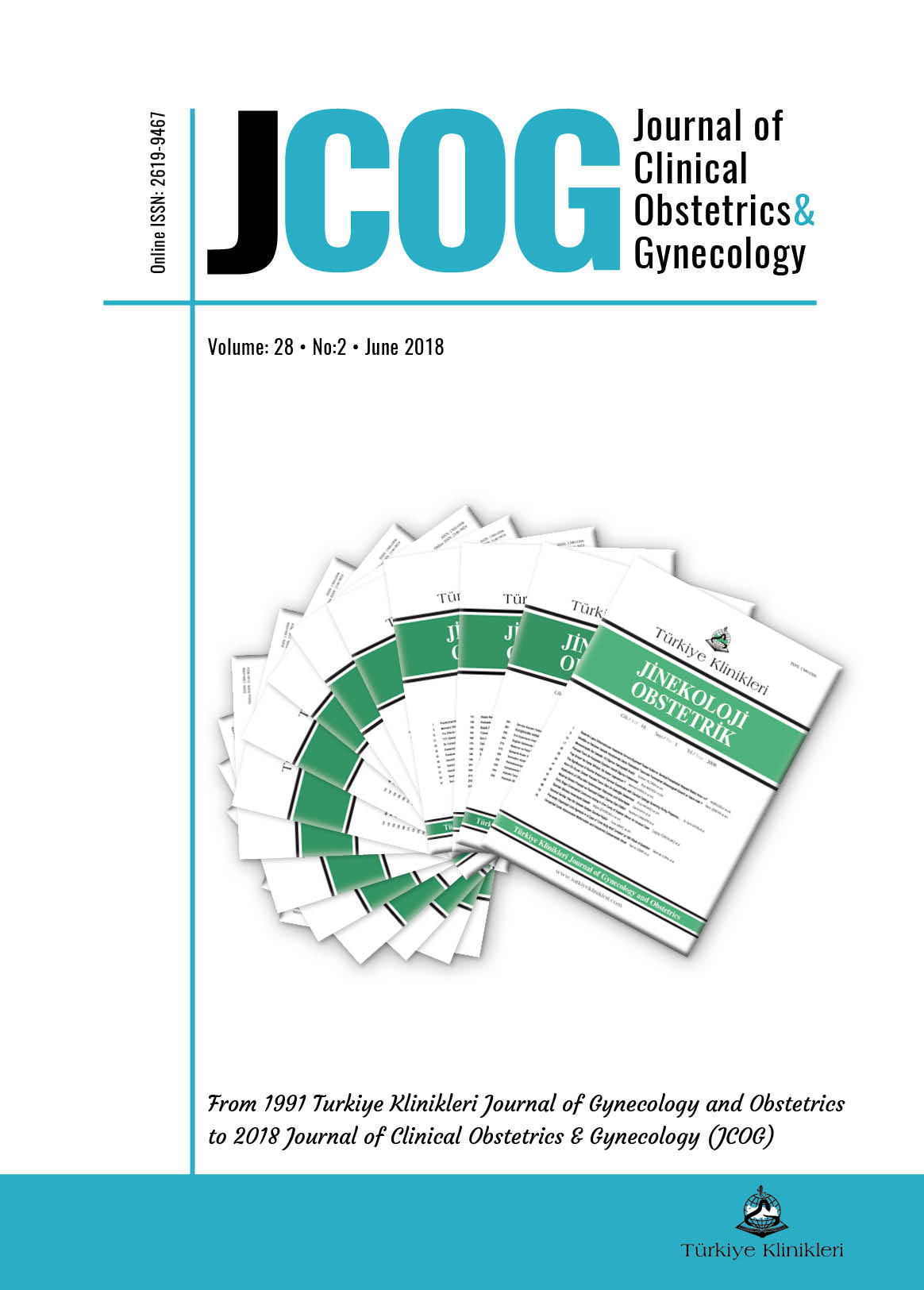Open Access
Peer Reviewed
ORIGINAL RESEARCH
2622 Viewed1438 Downloaded
Comparison of Laparoscopy and Laparotomy in Surgical Treatment of Ectopic Pregnancies: A 6-Year Experience at a Tertiary Center
J Clin Obstet Gynecol. 2018;28(2):60-4
DOI: 10.5336/jcog.2018-61559
Article Language: EN
Article Language: EN
Copyright Ⓒ 2025 by Türkiye Klinikleri. This is an open access article under the CC BY-NC-ND license (http://creativecommons.org/licenses/by-nc-nd/4.0/)
ABSTRACT
Objective: To investigate laparotomy and laparoscopic approaches in patients diagnosed with ectopic pregnancy (EP) and who underwent surgical treatment in our clinic during the last six years. Material and Methods: This study included 202 patients who underwent laparoscopic surgery and laparotomy for EP between January 2012 and January 2018 in our clinic. A comparison was made among the patients for age, gravidity, parity, mean â human chorionic gonadotropin (HCG) levels on admission, risk factors for EP, and clinical findings. The contributions of these two treatments to the postoperative process were assessed. Results: The surgical intervention was performed on 202 patients who had an EP. Of these patients, 110 (54%) underwent laparotomy and 92 (46%) underwent laparoscopic surgery. No differences were found at a statistically significant level between the groups in age, gravidity, parity, curettage, gestational age at admission, mean â-HCG levels on admission, and preoperative and postoperative hemoglobin levels. Although the length of postoperative hospital stay was shorter at a statistically significant level in the laparoscopy group than in the laparotomy group, operation time was shorter at a statistically significant level in the laparotomy group than in the laparoscopy group. Conclusion: When surgical treatment is decided in patients with EP, laparoscopic surgery can be preferred more by considering the fact that it leads to less contamination, reduces hospital length of stay, and has a cost advantage over laparotomy. However, treatment methods can vary according to the facilities of clinics, availability of surgical instruments, and experience of physicians.
Objective: To investigate laparotomy and laparoscopic approaches in patients diagnosed with ectopic pregnancy (EP) and who underwent surgical treatment in our clinic during the last six years. Material and Methods: This study included 202 patients who underwent laparoscopic surgery and laparotomy for EP between January 2012 and January 2018 in our clinic. A comparison was made among the patients for age, gravidity, parity, mean â human chorionic gonadotropin (HCG) levels on admission, risk factors for EP, and clinical findings. The contributions of these two treatments to the postoperative process were assessed. Results: The surgical intervention was performed on 202 patients who had an EP. Of these patients, 110 (54%) underwent laparotomy and 92 (46%) underwent laparoscopic surgery. No differences were found at a statistically significant level between the groups in age, gravidity, parity, curettage, gestational age at admission, mean â-HCG levels on admission, and preoperative and postoperative hemoglobin levels. Although the length of postoperative hospital stay was shorter at a statistically significant level in the laparoscopy group than in the laparotomy group, operation time was shorter at a statistically significant level in the laparotomy group than in the laparoscopy group. Conclusion: When surgical treatment is decided in patients with EP, laparoscopic surgery can be preferred more by considering the fact that it leads to less contamination, reduces hospital length of stay, and has a cost advantage over laparotomy. However, treatment methods can vary according to the facilities of clinics, availability of surgical instruments, and experience of physicians.
MENU
POPULAR ARTICLES
MOST DOWNLOADED ARTICLES





This journal is licensed under a Creative Commons Attribution-NonCommercial-NoDerivatives 4.0 International License.










